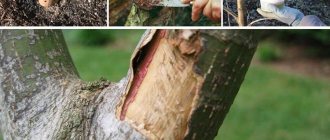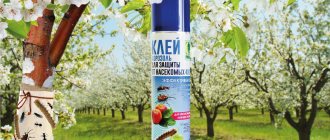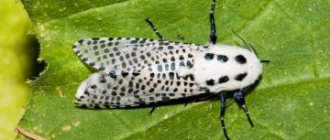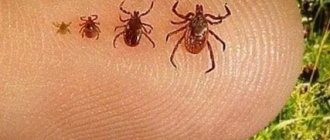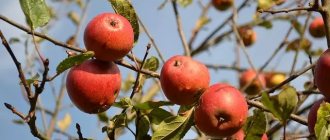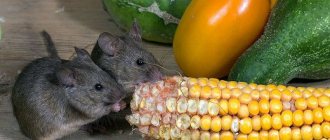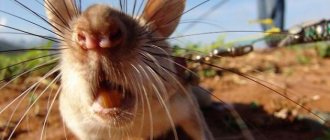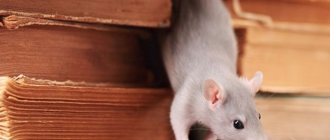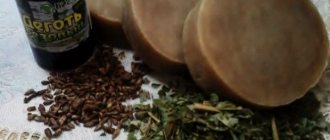A long winter becomes a truly difficult test for fruit trees - in addition to frost, they are threatened by attacks from hungry rodents, who especially like the bitter bark of apple crops.
Therefore, it is worth paying considerable attention to protecting the apple tree from mice in winter, especially if it is a young tree. Otherwise, the damage they manage to cause can threaten the health of the seedlings, even to the point of their death. We have selected the most effective ways to protect an orchard from the sharp teeth of these pests.
Why do rodents like apple trees?
A hungry winter drives field mice in search of food into our gardens, vegetable stores and residential buildings. The favorite delicacy of these uninvited guests is, first of all, apple tree bark, since it is softer in structure and has a pleasant taste, and almost all stone fruit trees (cherries, cherry plums, apricots, plums) are bitter - the tailed ones begin to visit them last.
And the bark of apple trees also contains a lot of vitamins, which are so necessary to support the life of these pests, especially in the spring.
Which trees are at risk?
Hares and field mice, which most often attack gardens, have their own taste preferences, which is why some trees stand untouched, while others die from damage. For example, rodents attack pears only when there is absolutely nothing to eat, but apple trees, especially young ones, are in trouble.
The following trees are not attacked at all:
- apricots;
- cherry plum;
- plum;
- cherry;
- peaches.
The explanation here is simple: the bark of stone fruit species is very bitter, and it is impossible to eat it. However, there may be some minor damage from animals on these trees, but it is not life-threatening. It turns out that the closest attention should be paid to the protection of young apple trees.
What can happen to a tree after rodent attacks?
If rodents manage to “ring” the tree, destroying the bark all around, the plant has virtually no chance to survive. After all, the transport corridor through which water and nutrients must flow will be disrupted. In addition, the function of the bark is to protect the tree from diseases, cold and all kinds of parasites.
It is not without reason that the most active and dangerous pests of fruit trees are field mice and water voles. If the first species more often gnaws the lower parts of trees, making their way to them under a layer of snow, then the second species is able to gnaw off the root collars of an apple tree.
Also, the consequences of attacks can be:
- severe damage to the lower parts of the bark, as a result of which the frost resistance of the tree decreases and cracks appear in the trunk;
- wood rotting, because mouse saliva contains a component that promotes this;
- damage to the root system, making moves in it leaving only thin frames.
The danger also lies in the fact that more than one mouse will “tread the path to the apple tree” (after all, they often walk in whole broods). Sometimes after such invasions one can observe the following picture: in the spring, a young apple tree suddenly falls to one side and is easily torn out of the ground.
To prevent such cases, it is very important to know how to protect apple trees from mice in winter and what preventive measures to take for this.
Bridge grafting
This type of grafting is used when the tree has received too much damage. It often happens that in cold winters mice gnaw the bark on apple trees from all sides. As a result, the movement of nutrients is disrupted and the tree may die. Bridge grafting helps save such trees. If the trunk is only partially exposed, you can simply treat this area with Bordeaux mixture and lubricate it with garden varnish.
Any trees can be grafted with a bridge if their trunk diameter reaches 3 cm.
Preparation of cuttings
Important! It is necessary to properly prepare the cuttings for grafting, otherwise the procedure will not be effective.
- They can be prepared in late autumn after pruning trees or in early spring. But you cannot immediately graft a cut cutting into a tree - it simply will not take root. The material for grafting is stored in a dark room, sections of cuttings are immersed in damp sand or sawdust. You can store cuttings in the basement. If there is no basement, you need to wrap them in a damp cloth and put them in the refrigerator. During storage, care must be taken to ensure that the fabric does not dry out and that the cuttings do not germinate.
- The thickness of the scion depends on the area of damage. If the height of the damaged area is no more than 5 cm, twigs up to 4 mm in diameter are taken. If you have to take cuttings of a larger diameter, you need to make sure that they are flexible and bend easily.
- The number of scions depends on the diameter of the trunk. For seedlings with a diameter of 3 cm, two scions are sufficient, but an adult tree will need at least 8. The number of buds on the cuttings does not matter, since they are removed before the procedure. If you leave the buds on the scion, they will begin to grow and disrupt the conductive ability of the scion.
- The varieties of apple trees from which scions are taken can be completely different. You can even take cuttings from wild plants.
- When calculating the length of the cutting, you need to take into account the width of the damaged area, the length of the cuts at the ends of the cutting and a tolerance of approximately 10 cm.
- The number of scions intended for one tree must be even. The distance between them should not exceed one or at least two cutting diameters.
Vaccination procedure
Grafting with a bridge is carried out during the period when sap flows and the bark lags behind the trunk more easily - in mid-latitudes this time usually occurs in May. Areas of trunks with ring damage must be protected from drying out until this moment, for which it is enough to cover them with natural drying oil or garden putty.
Particular attention should be paid to the processing of scions. Tools must be well sharpened and disinfected. At the ends of the cuttings you need to make cuts with a very sharp angle. The cut should be smooth, without roughness. Its length should be 4-5 times the diameter of the scion.
Performing the procedure requires accuracy and precision:
- the bare part of the trunk is cleaned to a shine with a sharp garden knife;
- part of the bark is removed above and below the site of damage - to a healthy area;
- stepping back 1-2 cm from the edge of the bark, you need to make a cut in the shape of the letter T - it should be symmetrical, top and bottom, and shallow;
- A cut of the prepared cutting is placed under the edges carefully bent with a knife, the edges of the bark are closed, covered with garden varnish and secured with a plaster - the cut should fit tightly to the trunk;
- the cut of the second end of the scion is installed and secured in the same way - the cutting should bend in a small arc.
Important! During grafting, you need to carefully monitor the direction of growth of the cutting so as not to confuse the top and bottom.
After all the cuttings have been grafted around the circumference of the trunk, it is recommended to tie the grafting with washcloth, then wrap it in roofing felt and sprinkle it with sawdust. The bast will gradually rot, so you don’t have to remove the bandage. Do not apply a bandage that is too tight - it will interfere with the growth of the tree. Some gardeners tie it with plastic tape - then around mid-summer the bandage should be removed and the apple tree should be given the opportunity to harden for winter.
If shoots grow from the buds on the cuttings, they need to be cut off. All flowers are also removed from the apple tree to reduce the load. If the wounds are inflicted in the lower part of the trunk, bridges must be placed from the root system to the trunk.
Effective means of prevention
First of all, we put the garden in order, not leaving secluded places for mice under a layer of brushwood, leaves, straw and heaps of plant debris (pests like to make their passages and places of refuge in them).
To some extent, the following measures will help protect against attacks:
- careful digging of the area around the trunk - bare soil is less attractive to these pests, because they like to make their way to the trunk under the cover of dry grass and leaves;
- carefully compacting the snow layer around the tree trunk circle (it will be more difficult for them to lay paths in such a dense layer of snow cover);
- eliminating odors from food waste, compost bins, etc. near trees.
Each gardener has his own favorite time-tested ways to protect an apple tree from mice for the winter.
Spraying
Preparing apple trees for winter (autumn) includes such a necessary measure as spraying. An effective remedy in this regard is copper sulfate. Rodents react negatively to the smell of this substance. In this case, the trees receive double protection. It destroys insect pests and prevents fungal infections that can affect tree trunks due to the formation of excessive dampness in the winter-spring period.
To prepare the solution, take 100 g of powder and 1 bucket of water. Spraying is carried out very generously, as this product does not harm the plants. It can also be used to treat young trees. Typically, such work is carried out in November, in calm, dry weather.
Spraying with Bordeaux mixture can be carried out even at the beginning of winter with the appearance of the first frosts. Sensing an unpleasant odor, mice will avoid your garden. And late processing of the garden will allow you to preserve its effect longer.
Which method of protecting an apple tree from mice to choose?
The easiest way out is to wrap or fence the trunk with materials that provide mechanical protection from the sharp teeth of animals. In this case, the following will do:
- a piece of roofing felt (you must first wrap fabric, burlap, paper so that the roofing felt does not come into direct contact with the bark);
- sackcloth;
- spunbond;
- fiberglass;
- cut plastic bottles (without a tight fit);
- spruce branches with needles down;
- a special plastic mesh, which is called “to protect seedlings”;
- old nylon stockings;
- elastane;
- lutrasil;
- agrofibre;
- garden bandage;
- log bark;
- pieces of plastic pipes;
- nets for storing various vegetables, wound in several layers, etc.
If desired, you can purchase reusable protection made of polymer materials, which has holes for ventilation and ready-made fastenings.
Still, it is more convenient and profitable to wrap the tree with soft material, which is less damaging to the bark and is easier to use.
You can cut it into ribbons about 25 cm wide and wind it, without leaving any empty gaps and be sure to overlap the next turn on the previous one. This winding is secured on top with rope or wire, and you can additionally spray the coating with odorous solutions.
The clear advantage of fine mesh nets is the preservation of light permeability and natural air circulation, additional snow retention, and roofing felt and similar dark materials must be removed in early spring so that the trees do not get sunburn, damping out and overheating of the bark.
Any wrap needs to be buried in the ground to a depth of 10-15 cm and sprinkled with soil so that nimble voles do not have the opportunity to make “undermining” for themselves.
Each material has its pros and cons, and none of them is absolutely universal and completely guarantees the protection of apple trees from mice and other rodents in the garden in winter.
To increase efficiency, it is better to resort to one of the additional methods, namely:
- mulching (for example, sawdust, peat, impregnated with creolin or carbolic acid);
- whitewashing with “Protection”, VS-511 or water-dispersed paint VD-K4-577 (you can add camphor oil);
- coating with clay mash with the addition of fresh manure, carbolic acid or turpentine;
- the use of devices (repellents) that create noise effects or generate ultrasonic waves;
- the use of various odorous mixtures in whitewash, mulch, wraps (kerosene or diesel fuel, naphthalene, birch tar, etc.), bait poisons (“Storma”, “Waratah”, “Efa”).
Mice also do not like the taste of copper sulfate, which, in addition to protecting against rodents, also protects against fungal diseases. Also, before cold weather, you can spray Bordeaux mixture (1%) directly through the mesh fences.
The disadvantage of “fragrant” odors is that over time they fade, weaken and require repeating the procedure, which is not very convenient.
Reverse growth
And this method is used in the most extreme case, when the trunk is so damaged that it is not possible to restore it. In this case, the trunk is cut down. This should be done above the lower kidney
It is very important to carry out this procedure in early spring, when sap flow has not yet begun.
The stump obtained after cutting down the trunk is treated with garden varnish. It is applied to the entire stump in a thick layer. In the spring, the stump will definitely sprout. There is no need to leave it all, you need to leave only the strongest sprout, it is this that will give rise to a new tree. This method is applicable only to trees that have been growing for more than five years. And one more thing: the tree must have a highly developed root structure. Young trees do not have developed roots, so this restoration method cannot be applied to them.
Traditional methods to help protect trees from mice
It has been noticed that these pests do not like certain odors, for example, from plants such as:
- mint;
- red elderberry;
- coriander or cilantro (seeds);
- wild rosemary
Of course, they will not replace the full protection of apple crops from attacks by mice in winter, but they can still be used as auxiliary deterrents.
There is also an interesting way to use the black root plant (popular name “rat racer”), the fruits of which are covered with a prickly shell, and the roots and above-ground parts contain substances that are poisonous to them.
Clinging to the body of a rodent, the thorns can cause torment, like burdock, and eating the plant will cause damage to the nervous system, suffocation in mice, internal hemorrhages and their further death.
Coating trunks
When whitewashing the trunk in the autumn, you need to add various odorous substances to the solution. However, this method provides only temporary protection, since odors disappear over time.
Thick whitewashing is another important step in preparing an apple tree for winter. In autumn, tree trunks are coated with liquid mixtures. Unlike whitewash, they should have a thick consistency.
It is better to purchase such products in stores, the chemical composition of which has already been selected in the correct proportions. Such solutions can be prepared independently, taking into account the recommendations of experienced gardeners.
To prepare the mixture, you will need the following components: 1.5 kg of laundry soap, 2 bottles of vegetable oil (0.5 l), 200 ml of turpentine and 150 g of naphthalene.
If there is excess mixture left after processing the trunks, it should be poured evenly around the tree.
What not to do
In order for methods to protect an apple tree from mice to have a positive effect, you should not tie the trunk with straw, because on the contrary, it will attract small rodents as a cozy nest for wintering.
If you suddenly want to coat the trunk directly with autobreaker, nigrol or another odorous “chemical” to repel odors, know that such substances contribute to the deterioration of winter hardiness and can cause the death of the tree from freezing.
To prevent spring from bringing disappointment in the form of young apple trees disfigured by mouse teeth, it is better to protect their trunks using any of the existing methods.
Preventive actions
Hares and mice are easily frightened. To do this, large black plastic bags are hung on trees. They will rustle, and rodents will not risk approaching the apple trees. You can hang dark circles with a diameter of 15 cm, cut out of cardboard, on the lower branches. They will move with the wind and repel pests.
Or take tin cans, cut them to form a tin strip, then twist them into spirals. Then hang them up so that when the wind blows they hit each other. You can also hang scarlet ribbons on trees.
Here you can watch a video on the topic “How to protect a tree from rodents for the winter”:
What is the threat to apple trees in winter?
In winter, animals that eat plant foods starve and are in constant search of food. They often gnaw bark from trees. More often than others, apple trees suffer from rodents, the bark of which is quite soft and does not taste bitter, such as plums or cherries.
Deterioration of the bark, especially when a large area is damaged, can lead to disruption of the movement of nutrients within the tree. In addition, without bark, the apple tree becomes defenseless against various infections and insect pests.
It also happens that mice gnaw the roots of a tree. This can cause gradual drying out or even death of the apple tree.
Animals dangerous to apple trees
Most often, apple trees are eaten by:
- voles;
- house mice;
- hares;
- wild rabbits.
Animals are especially hungry at the end of winter and the very beginning of spring, so raids on gardens become more frequent at this time.
Hare
